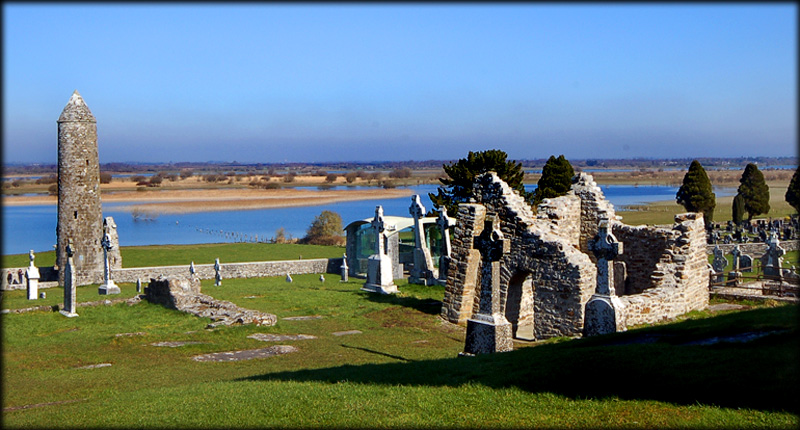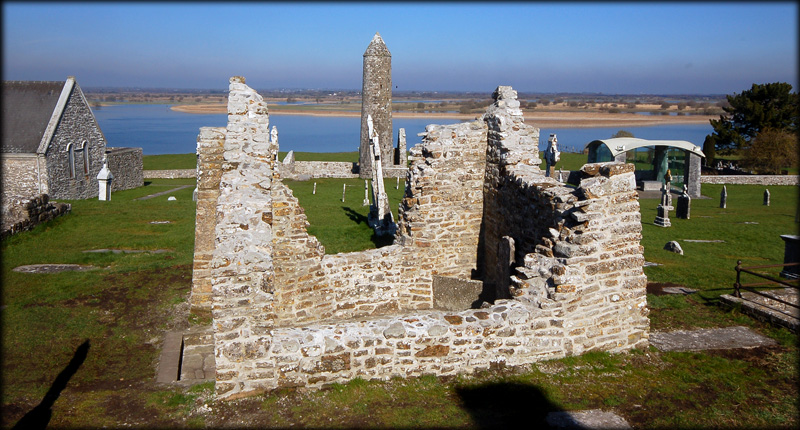Clonmacnoise
Temple Ciarán (Teampull Chiaráin) Tomb shrine, Oratory
For many centuries pilgrims have visited Clonmacnoise. The first recorded reference to pilgrimage is in the annals, where it is noted that a pilgrim died in 606. One of the main reasons behind any pilgrimage was to visit the grave or see a relic of the founding saint. Originally there were probably small wooden structures built over the graves. Over the years these were replaced by stone buildings. Radiocarbon dating of the mortar at Teampull Chiaráin suggests a date of about the 8th/9th century. The oratory measures only 4 X 3 metres internally and is one of a small number of unique Irish Tomb Chapels.

The shrine has antae which imitates the earlier wooden structures. In the north eastern corner is an area believed to be the burial place of Saint Ciarán. As is a tradition in Ireland, pilgrims would take a piece of soil from the Saint's grave to protect crops and also as a cure for ailments. During the last few centuries a Chalice and the Crozier of the Abbots of Clonmacnoise, now housed in the National Museum, was unearthed within the tomb-shrine. Leaning against the south wall inside the shrine is the fine cross slab shown bottom right.

The sloping arched doorway

From the south east

The above image was taken from the south, the saints tomb can be seen in the NE corner. More examples of this type of tomb shrine are St Molaise's House on Devenish Island, Labbamolaga in Cork, Teach Molaise on Inishmurray and St Declan's at Ardmore. The Priest's House Glendalough and Saint Columba's House in Kells may also be other examples. A particular style of tomb shrine known as "A Mortuary House" can be found in the northern half of Ireland. The finest examples are Banagher and Bovevagh in County Derry, Saul in County Down and Cooly in County Donegal. The tent shaped slab shrines at Temple Cronan, County Clare and St Erc's shrine at Slane in County Meath are another type of shrine. We hope to add further examples of these at Killabuonia and Killoluaig after our upcoming trip to Kerry. Another unique type of shrine is the viking style hog-back found at Castledermot.
Situated: Very easy, located in the main enclosure at Clonmacnoise north east of the Cathedral.
Discovery Map 47: N 009 306. Last visit March 2011.
Longitude: 7° 59' 8" W
Latitude: 53° 19' 35" N
Photos: Jim Dempsey and Deb Snelson.
